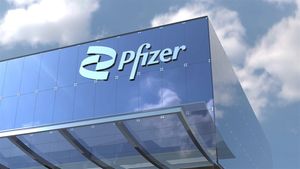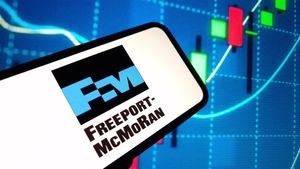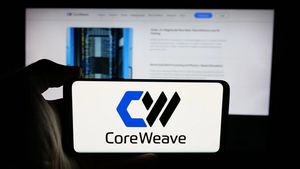
New York, NY – September 26, 2025 – In a landmark announcement today, SWIFT, the Society for Worldwide Interbank Financial Telecommunication, has launched a pivotal pilot program to test Ethereum stablecoin payments on Consensys' Linea blockchain, an Ethereum Layer 2 platform. This strategic move by the bedrock of traditional finance signals a profound embrace of digital assets, aiming to revolutionize the efficiency, transparency, and cost-effectiveness of cross-border payments. By integrating payment instructions and settlement into a single, on-chain transaction, SWIFT is poised to accelerate the mainstream adoption of digital assets and redefine stablecoins as critical commodities in the evolving global financial landscape.
This groundbreaking initiative, involving over a dozen prominent global banks, represents a significant validation of blockchain technology and stablecoins by the established financial order. It directly addresses the long-standing inefficiencies of the traditional correspondent banking system, promising unprecedented speed and cost reductions in international settlements. As stablecoins gain traction as reliable mediums of exchange and stores of value, SWIFT's exploration positions them as fundamental instruments for value transfer in the digital economy, akin to traditional commodities that underpin global trade.
Detailed Coverage: SWIFT's Landmark Ethereum Stablecoin Test on Linea
The pilot program's core objective is to demonstrate how financial institutions can achieve direct on-chain settlement for payments, moving beyond SWIFT's traditional role as a messaging service. By combining payment instructions and settlement into a single, atomic on-chain transaction, the initiative seeks to dramatically cut costs and enable real-time monitoring of payment progress, a stark contrast to the multi-day settlement times and numerous intermediaries of the current system.
SWIFT's strategic selection of Linea, an Ethereum Layer 2 zk-rollup network developed by blockchain software company Consensys, is a testament to its commitment to scalability, security, and privacy. Linea's technology offers low-cost, high-throughput transactions while inheriting the robust security of the underlying Ethereum network. Crucially, its advanced cryptographic proofs address critical compliance and regulatory concerns regarding data privacy for participating financial institutions, making it an ideal platform for institutional adoption. While the full "stablecoin initiative" or "interbank token project" is currently in the "consideration stage" or "under review," the pilot explicitly explores the use of a stablecoin-like token as a model for direct on-chain settlement.
The announcement today, September 26, 2025, culminates SWIFT's earlier declarations regarding live trials of digital asset and currency transactions. As early as October 2024, SWIFT indicated that banks across North America, Europe, and Asia would begin these trials in 2025, with this Linea pilot marking a transition from experimental phases to real-world application trials. Key players involved include SWIFT as the orchestrator, Consensys and its Linea network as the technology providers, and a consortium of global banks, notably BNP Paribas (OTCMKTS: BNPPF) and BNY Mellon (NYSE: BK), as active participants.
Initial market reactions have been largely positive, viewing this initiative as a significant institutional validation of both blockchain technology and stablecoins. It signals a growing acceptance within traditional finance that digital assets are not merely a fringe phenomenon but a viable and potentially superior mechanism for future financial operations. The move also positions SWIFT in direct competition with emerging cross-border payment solutions, most notably Ripple (XRP), which has long advocated for blockchain's transformative potential in this space.
Market Movers: Winners and Losers in the Digital Asset Revolution
The SWIFT Ethereum stablecoin test on Linea is poised to significantly impact various public companies across the financial sector, creating both clear winners and potential challenges.
BNP Paribas (OTCMKTS: BNPPF) and BNY Mellon (NYSE: BK), as active participants in the pilot, stand to be significant winners. Their early involvement provides invaluable experience and influence in shaping the future standards and infrastructure of blockchain-based cross-border payments. The adoption of stablecoin payments on Linea can lead to reduced costs, faster settlement times, enhanced security and transparency, and improved operational efficiencies. These banks can leverage their early adoption to offer modernized cross-border payment services, attracting more clients and gaining a competitive edge. Conversely, traditional financial institutions that are slow to adapt and integrate blockchain technology into their core operations risk losing market share due to their reliance on often cumbersome and expensive legacy systems.
Consensys, the developer of the Linea network, is an immediate and clear winner. This collaboration with SWIFT and major global banks offers immense validation for Consensys' technology and expertise in institutional-grade blockchain solutions. The pilot highlights Linea's capabilities in providing low-cost, high-throughput, and privacy-focused transactions, crucial features for financial institutions. Success in this trial could significantly increase the adoption of Linea and other Consensys-developed tools within the traditional finance sector, solidifying its position as a leading blockchain infrastructure provider. Less established blockchain providers lacking enterprise-grade solutions or strategic partnerships might struggle to compete.
Ripple (XRP) faces a direct challenge. Ripple has long marketed its blockchain-based solutions as a faster and more cost-effective alternative to SWIFT's traditional messaging system. SWIFT's development of its own blockchain solution and its exploration of an interbank token, in collaboration with major banks, directly competes with Ripple's core value proposition. If SWIFT successfully integrates and scales its blockchain-based stablecoin payments, it could diminish Ripple's competitive advantage. However, the broader adoption of blockchain in cross-border payments can also present opportunities for Ripple, especially if banks seek diversified blockchain payment providers or if SWIFT's solution faces unforeseen integration challenges. Ripple's recent stablecoin initiatives also demonstrate its readiness to serve traditional finance, suggesting a potential for coexistence or niche focus.
Broader Horizons: The Wider Significance of SWIFT's Digital Leap
This pilot program is a powerful affirmation that digital assets are integral to the future of finance, representing a profound shift as traditional financial institutions embrace blockchain technology. SWIFT's move beyond merely improving existing messaging to a direct foray into on-chain settlement indicates a maturing strategy to incorporate blockchain at the transactional core. The decision to leverage Linea, an Ethereum Layer 2 solution, underscores a pragmatic approach to addressing scalability, cost, and privacy concerns for enterprise-grade volumes.
The initiative aligns with and accelerates several key industry trends: the mainstream adoption of digital assets, the growth of the tokenized economy (with market projections reaching $16 trillion by 2030), and the increasing demand for faster, cheaper, and more transparent payments. By exploring direct on-chain settlement, SWIFT aims to unlock unprecedented efficiencies in international transactions, addressing long-standing inefficiencies of legacy systems.
The ripple effects extend to regulatory bodies. The SWIFT Linea test, particularly its focus on "regulated stablecoins" or "stablecoin-like tokens," is expected to provide a practical blueprint for how such assets can be integrated into a compliant and supervised financial system. This will likely accelerate discussions among global regulators on supervising these new financial instruments and influence the development of policies around central bank digital currencies (CBDCs) and their interoperability with private stablecoins. The emphasis on "regulated stablecoins" suggests a move towards assets that comply with existing or emerging financial regulations, differentiating them from less regulated cryptocurrencies.
Historically, SWIFT's move can be viewed in the context of its long history of adapting to technological advancements. This pilot marks a significant evolution from its traditional role as a messaging service to directly exploring on-chain settlement, a capability that extends its role into direct value transfer. It's a strategic effort to remain relevant in a rapidly digitizing financial world, much like how traditional banks eventually integrated the internet into their operations after initial skepticism. This initiative represents SWIFT "catching up" to the digital age, a crucial step towards a more efficient, transparent, and interconnected global payment system.
The Road Ahead: Navigating the Future of Digital Payments
In the immediate aftermath of the Linea test, practical results are anticipated to emerge over several months, crucial for evaluating technical feasibility, security, and scalability. SWIFT is already set to conduct broader live trials of digital asset and currency transactions from November 2025, encompassing stablecoins, tokenized currencies, and CBDCs. A major infrastructure shift is also underway with SWIFT's full transition to the ISO 20022 MX format by November 2025, which will natively support blockchain-specific features.
Long-term possibilities include the mainstreaming of digital assets within traditional finance, a paradigm shift towards a more digital and distributed financial future. SWIFT envisions evolving its platform to offer DLT-based services to its 11,000+ members, ensuring end-to-end automation and backward compatibility. Market analysts project substantial growth in the stablecoin market, potentially reaching $3.7 trillion by 2030, with the broader tokenized asset market soaring to $16 trillion by 2030 or even $30 trillion by 2034.
Strategic pivots and adaptations will be crucial. Financial institutions must actively innovate and integrate blockchain technology to remain competitive. A critical challenge is managing interoperability between diverse blockchain networks and traditional financial systems, with SWIFT aiming to connect these "digital islands." Widespread adoption hinges on achieving regulatory clarity and consistent legal frameworks, alongside enhanced cybersecurity and compliance measures.
Market opportunities include the emergence of new services like digital asset custody and tokenization services, improved corporate treasury operations, and the potential for bank-issued stablecoins or tokenized deposits. However, challenges such as regulatory fragmentation, cybersecurity risks, reserve transparency, and the potential for deposit disintermediation for traditional banks will need to be addressed. Several scenarios could unfold, from a gradual, phased integration of blockchain capabilities to a more radical overhaul where a substantial portion of cross-border payments shifts to a blockchain-native model, with SWIFT potentially acting as an "orchestrator" of various DLT settlement rails.
Final Verdict: A New Dawn for Global Finance
Today's announcement from SWIFT regarding its Ethereum stablecoin payments test on Linea marks a pivotal moment in the evolution of global finance. It signifies a decisive move by the traditional financial establishment to embrace digital assets, paving the way for a more efficient, transparent, and interconnected global payment system.
The key takeaways underscore SWIFT's commitment to blockchain integration, with a strong focus on on-chain messaging and the strategic exploration of stablecoin-like tokens for settlement. The broad participation of major global banks like BNP Paribas (OTCMKTS: BNPPF) and BNY Mellon (NYSE: BK) validates the initiative's importance and potential for widespread adoption, while also intensifying the competitive landscape for existing blockchain-based payment solutions like Ripple (XRP).
Moving forward, the market can expect increased attention on blockchain interoperability and the development of regulated digital asset frameworks. Cross-border payments, long plagued by slowness and high costs, stand to benefit significantly. The lasting impact could involve a fundamental transformation of international payment rails, streamlining global settlements and reducing reliance on multiple intermediaries. This strategic declaration ensures that SWIFT's vast network can securely and efficiently support digital assets and currencies through existing connectivity.
Investors should closely monitor the pilot program's progress and outcomes, any further advancements in SWIFT's stablecoin and interbank token initiatives, and evolving regulatory responses globally. The growth of the Linea and broader Ethereum ecosystem, alongside the adaptive strategies of competitors, will also be crucial indicators. SWIFT's proactive engagement with DLT and stablecoins positions it to maintain its central role in global financial messaging, bridging traditional fiat systems with the burgeoning digital asset economy.
This content is intended for informational purposes only and is not financial advice.





